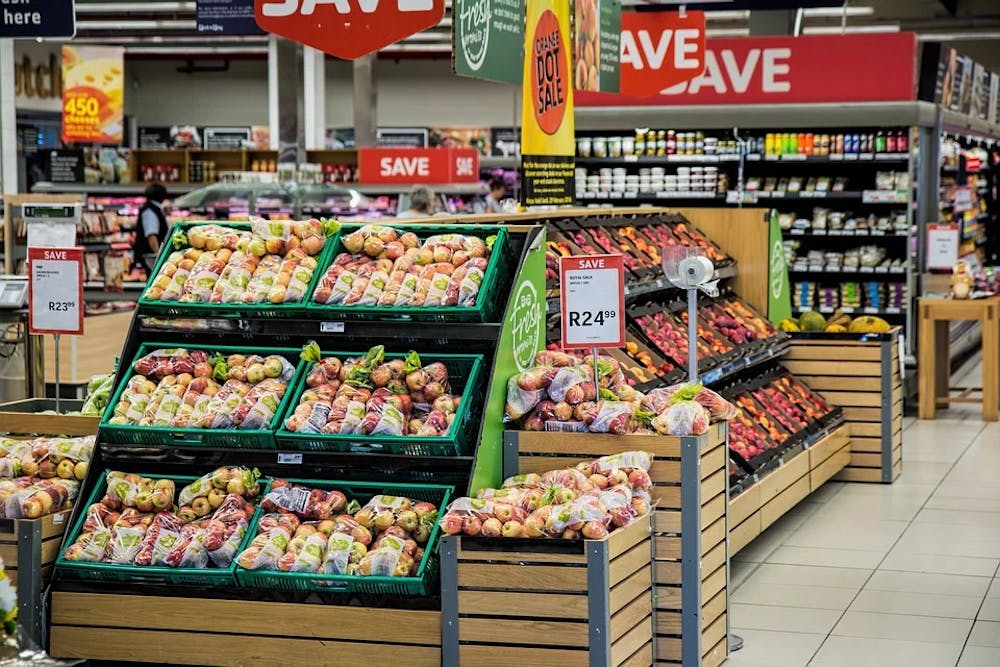By: Denali Selent
Being a consumer in today's world can be a confusing and overwhelming time. We are constantly bombarded with media, advertisements and social media posts telling us to “buy this”, “shop here” or “support this brand”. And to add another dimension of confusion, the environmentally conscious shopper, often wanting to put his or her money towards trustworthy brands that are doing good for the planet, rarely has the time to thoroughly investigate everything entering their cart. Oftentimes we are swayed towards companies with eco-friendly messages or pictures on their packing or label, and we trust that this correlates to a great brand. Unfortunately however, this is often a ploy known as greenwashing. As defined by Merriam-Webster, “Greenwashing is the act of misleading customers and potential customers into believing that a product or service is environmentally friendly.” Oftentimes companies do this by choosing words like “natural” and “eco-friendly” to describe their product, or displaying images of flowers and pristine wildlife on the labeling. These tricks are designed to catch a shopper’s eye and represent the brand as doing more for the environment than they often are. One blatant example is the water bottle industry. Few will deny that plastic water bottles are detrimental to the environment. The vast majority of bottles don’t make it into recycling, and even those that do still took fuel and resources to manufacture and transport around the world. As the environmental justice movement continues to gain footing, the number of people boycotting plastic water bottles has increased, leading to an interesting response from bottled water companies. Many began to partake in greenwashing, and falsely represent themselves as doing good for the planet. Fiji Artisanal Water, for example, launched an entire campaign under the site fijigreen.com, which included advertisements that touted sayings like “Every drop is green,” or “Untouched” with a gorgeous volcano scene in the background . The site fijigreen.com also contains numerous unsupported claims of how the company is changing to be environmentally-friendly. While any actions they take are a step in the right direction, at the end of the day, bottled water isn’t a sustainable option for sourcing water, though we may be led to believe so by greenwashing efforts.Unfortunately, the examples of greenwashing go on and on, spanning from car companies and household goods to food items and so on. Luckily, just as it is easy for companies to greenwash, it is possible for us to put our support behind brands that truly are making a difference, or at least moving in that direction. Here are a few quick tips and tricks for avoiding greenwashing, without having to sacrifice too much time to self-investigating: Look out for CertificationsOne of the easiest things to do as a shopper is look for any certifications displayed on labels. These certifications mean the product has been verified to meet a certain number of standards set forth by either governmental agencies or third-party companies. Some examples include USDA Organic, Fair Trade Certified, The Rainforest Alliance Certified, and more. A great sign is if the company is a certified B Corporation, which has strict guidelines that encourage eco-friendly and humane business practices. Some examples of B Corps include Ben & Jerry’s, Patagonia, Swell Water Bottles, and many more: check out the full list here at the B Corporation Directory! Avoid Vague ClaimsIf a company simply labels themselves as “eco-friendly” without backing it up with specific missions or behaviors, it’s often a red flag. Instead, look for labels that specifically outline exactly why they claim to be environmentally conscious. If a product doesn’t have this, many companies often include their sustainability missions on their website, so a quick search and scan of the webpage can be helpful to see if the company's views align with yours. Check Out Blog Posts and Magazines for Brand SuggestionsNowadays there are so many great, environmentally focused blogs, magazines and resources who do the heavy lifting of all the researching and background checks; because of this, these resources are able to provide great product and brand suggestions. One great example is the blog Sustainably Chic, which provides posts such as “Your Guide to Sustainable Activewear…,” or “10 Sustainable Basics Brands that are Affordable, Organic & Fair”. Another great blog, The Good Trade, has articles like, “11 Sustainable Snacks You Can Feel Good About Eating When You’re On The Go,” and “8 Organic & Fair Trade Teas We’re Sipping On.” The list goes on and on, and taking a couple minutes each day to read some of these articles is not only fun, but can provide you with some great brands to look out for, too. Making eco-friendly choices as consumers doesn’t have to be as daunting as it seems. As we work towards lessening our environmental footprints, being on the lookout for greenwashing, and subsequently shifting our support to awesome, sustainable companies is a great way to do so!Cover photo courtesy of Pixabay

